Sigma 18-50mm f2.8 DC DN Contemporary Review Fuji X:
There are a ton of great lens options for those in the Fujifilm X Series system. Fuji themselves have produced quite a few choices but there are also a lot of third party manufacturers producing some great lenses to choose from as well. For instance, Sigma has been steadily producing lenses in X mount, and as of today, the 18-50mm F2.8 DC DN Contemporary has been added to the collection with a priced of just $549. This zoom was a lens that I tested previously in L mount form, and thanks to Sigma, I was able to spend some time with the X mount version before its official release date. Here’s what I think of it.
Thanks for taking the time to read my review! If you’re considering purchasing this lens, and my review helped, please consider purchasing from any of the links mentioned in this review, which in turn, helps support this site. I get a small commission but it will not cost you anything extra. Thank you!
Sigma 18-50mm f2.8 DC DN Contemporary Review Fuji X Build Quality:
Let’s take a look at build first, and in this area, the 18-50mm F2.8 DC DN Contemporary feels very solid in the hands. In other words, the build is excellent. The barrel is made from Thermally Stable Composite (TSC), and this type of polycarbonate, which is used in many Sigma lenses, has thermal characteristics similar to aluminum, so it’s something that offers stable, and consistent performance even during larger temperature changes. It’s also worth mentioning that internal parts are made of metal, which not only allows them to be thinner with higher rigidity, it also means that this lens can stand up to more abuse over time. Lastly, there is a high-precision, brass bayonet mount with a dust and splash-resistant structure.
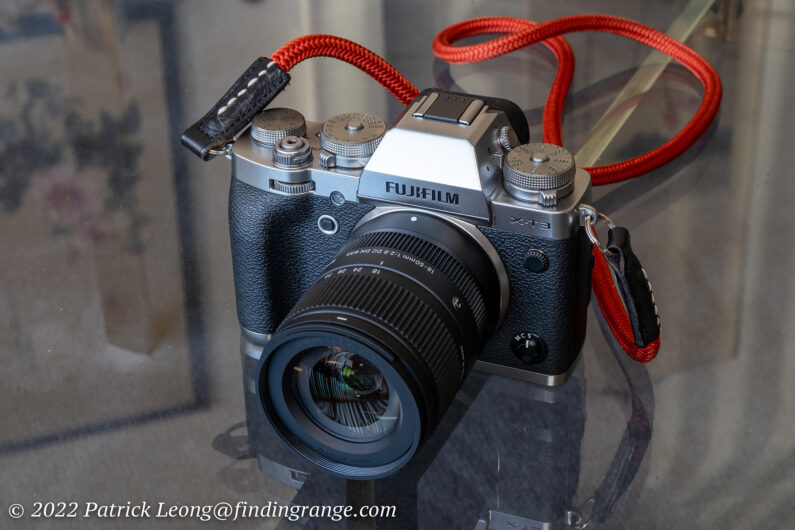
↑ Here’s the Sigma 18-50mm F2.8 DC DN Contemporary attached to the Fuji X-T3.
Ergonomically, the 18-50mm is just about perfect, and according to Sigma, it is currently the smallest and lightest in its class. This is a lens that offers an equivalent range of 27-75mm, and has a large fixed aperture of f2.8 yet it measures just 61.6 x 76.8mm/2.4 x 3.0 in. To top it off, it weighs just 285g/10.1 oz, and uses a 55mm filter.
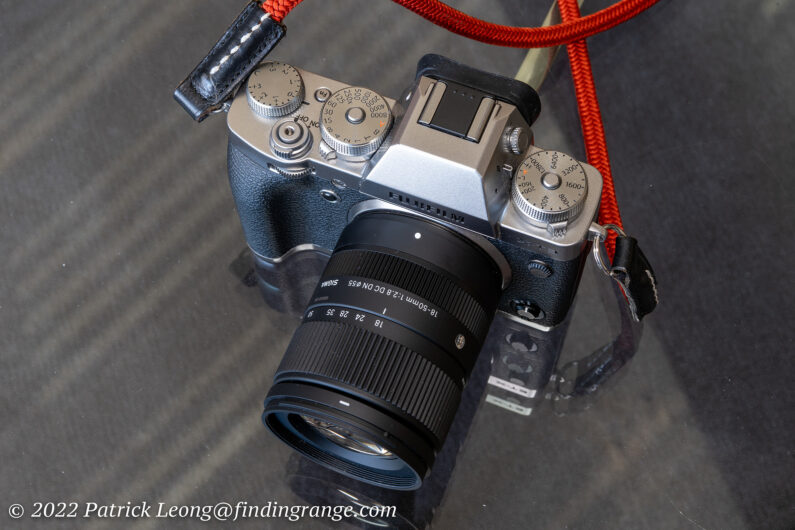
↑ Here’s a top view of the 18-50mm when attached to the X-T3.
A zoom of this range with a fixed f2.8 aperture can often times be pretty big and heavy. Take for instance, the Fujifilm XF 16-55mm f2.8 R LM WR lens. It’s a fantastic lens but it’s much larger and heavier. The dimensions are / 83.3 x 106mm/3.28 x 4.17 in. with the weight being 1.44 lb / 655 g. It also uses a larger 77mm filter. The Sigma loses a little range when compared to the XF 16-55mm but it’s about the same size as Fujifilm’s compact kit lens, the XF 18-55mm f2.8-4 R LM OIS lens. Keep in mind that the XF 18-55mm doesn’t have a fixed maximum aperture. For your information, the dimensions are 65 x 70.4 mm/2.56 x 2.77 in. and the weight is 10.93 oz / 310 g. It also uses a 58mm filter.
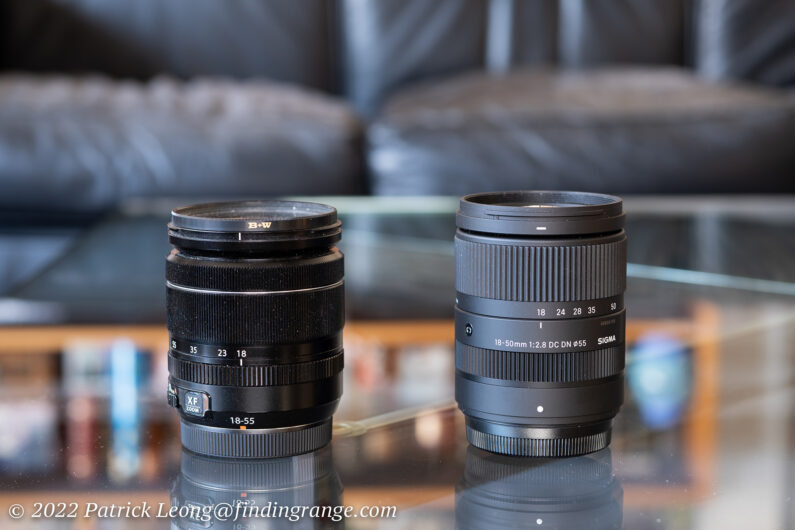
↑ Here’s how the 18-50mm f2.8 compares to the XF 18-55mm f2.8-4.
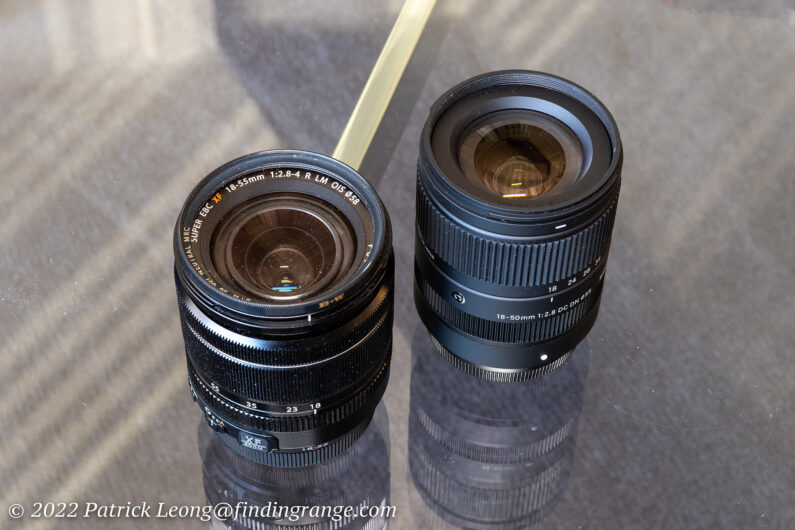
↑ Top view of the two lenses together.
With all that said, it should be no surprise that the 18-50mm f2.8 makes a fantastic daily lens. This is something that you can literally carry around all day long, and not feel fatigued. It’s compact enough that it can almost pass as a fixed focal length lens. It’s also very discreet, so it’s great for candids or street photography. It’s also something that you can even be carrying with just the camera, while leaving your bag at home. We all want something compact and easy to live with, especially when it comes to mirrorless. For many of us, that’s the whole point of mirrorless. This lens fits that mold in every way.
So, build is excellent, and so are the ergonomics. To top it off, there is a lens hood that is included. To me, it is also designed well because it does what it’s suppose to do like protect the front element from light impact, and protect against flare but it also fits the design of the lens overall. It’s not overly large. It’s petal shaped, and it’s a simple twist and lock type. It is also reversible for easy storage.
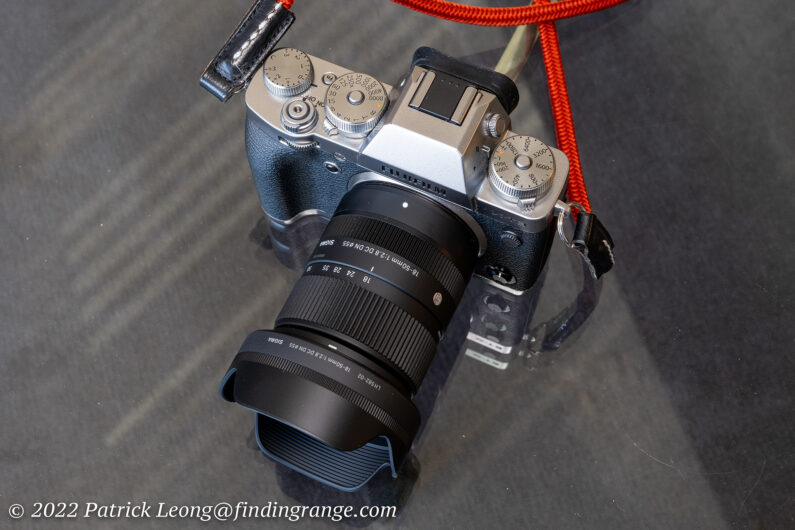
↑ Here’s the included petal shaped lens hood.
Sigma 18-50mm f2.8 DC DN Contemporary Review Fuji X Autofocus:
As for the autofocus, the 18-50mm F2.8 DC DN Contemporary uses a stepping motor, which is fast, and efficient. It’s also accurate and essentially silent in operation. I used this lens quite a bit with my Fuji X-T3, and overall, it was completely drama free. It worked like any other Fuji branded lens. While I did not do a direct comparison, it felt just as quick as my XF 18-55mm. The lens also worked great with face detection.
Sigma 18-50mm f2.8 DC DN Contemporary Review Fuji X Image Quality:
In terms of image quality, the 18-50mm F2.8 DC DN Contemporary is fantastic. I tested the L mount version a while back, and it performed great on the Leica CL. I’m happy to report that the X mount version is just as impressive, and really works well with the Fuji sensor.
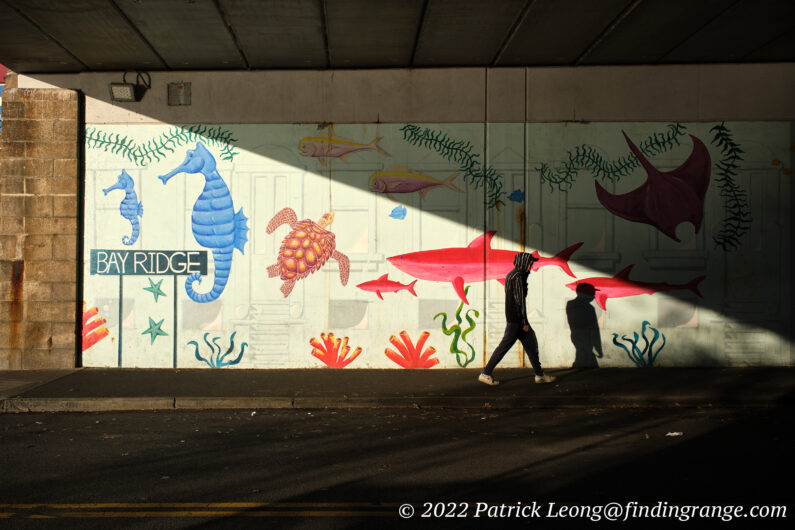
↑ This was taken with the 27mm focal length using f5.6 and 160 ISO.
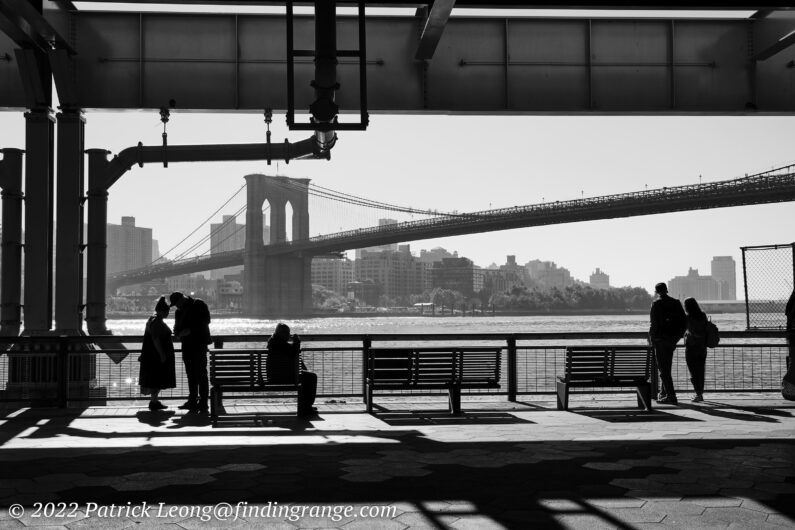
↑ I took this with the 27.6mm focal length using 160 ISO and f8.

↑ Here’s a photo I took with the 18mm focal length using 320 ISO and f8.
One the reasons why I am such a fan of the 18-50mm F2.8 DC DN Contemporary is because sharpness is excellent. At f2.8, this lens is sharp as a tack, especially in the center. There is only a very slight loss in detail on the edges. Sharpness increases slightly as you stop down with f5.6 to f8 being areas where I feel offer optimal sharpness. Keep in mind that I’m nitpicking here though because this is seriously one of those lenses that performs well at the entire aperture range. The sharpness is pretty much outstanding to me. There’s a lot of pop in the images with plenty of small details retrieved. In fact, I feel it’s even a bit better than my XF 18-55mm.

↑ I took this with the 47.5mm focal length using 160 ISO and f2.8.

↑ Here’s a 100% crop of the photo above. The leaves did move a bit because of wind but you can also see some tack sharp ones.
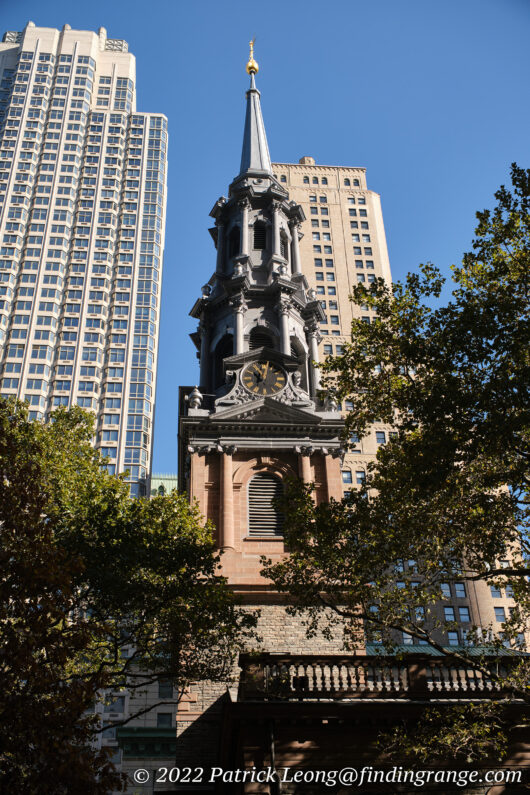
↑ I took this with the lens set at 29mm and f5.6. I used 160 ISO.
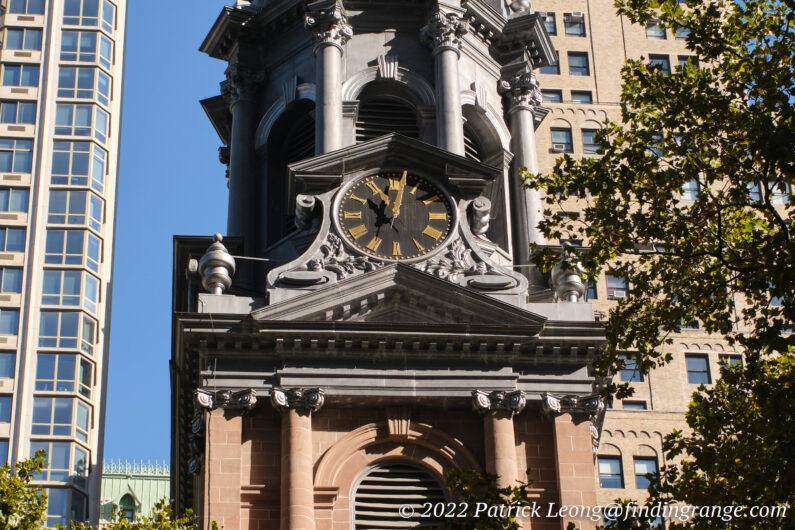
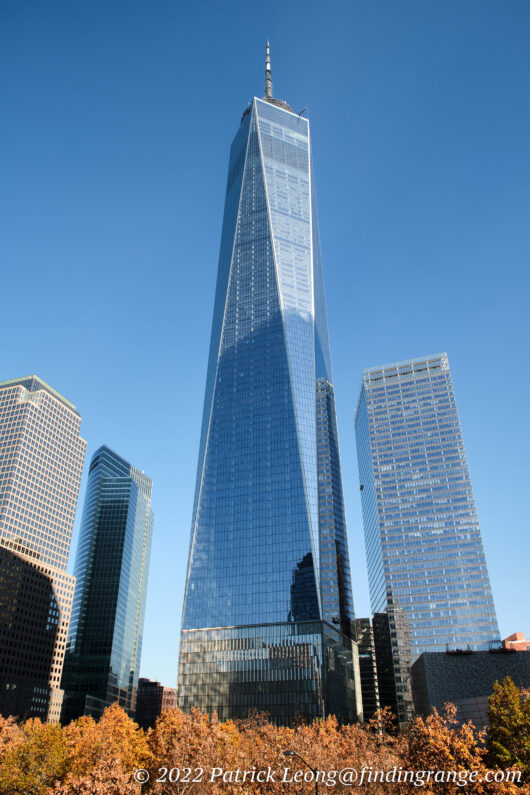
↑ This was taken with the 18mm focal length. I used f8 and 160 ISO.
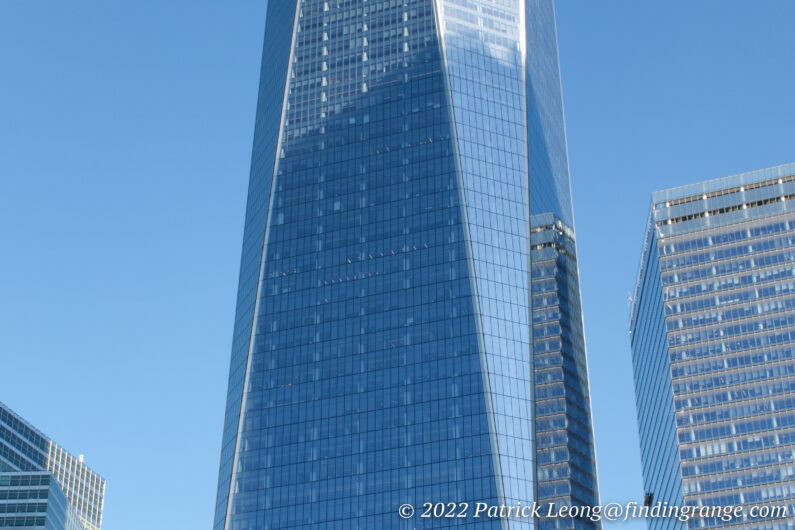
Other features also make this lens a great performer, such as, excellent color and contrast. I am also happy to report that flare wasn’t really a problem for me. Vignetting does show up at wide open aperture but it’s nothing out of the ordinary. Stopping down to f4 reduces nearly all of it. As far as I can see, this is true throughout the zoom range. Chromatic aberration is also well controlled. Overall, this is a high performance lens that should make any Fujifilm X Series user quite happy, in my opinion.

↑ I used f4 along with 160 ISO. I used 50mm.

↑ This was taken with the 30.9mm focal length. I used f8 and 160 ISO.
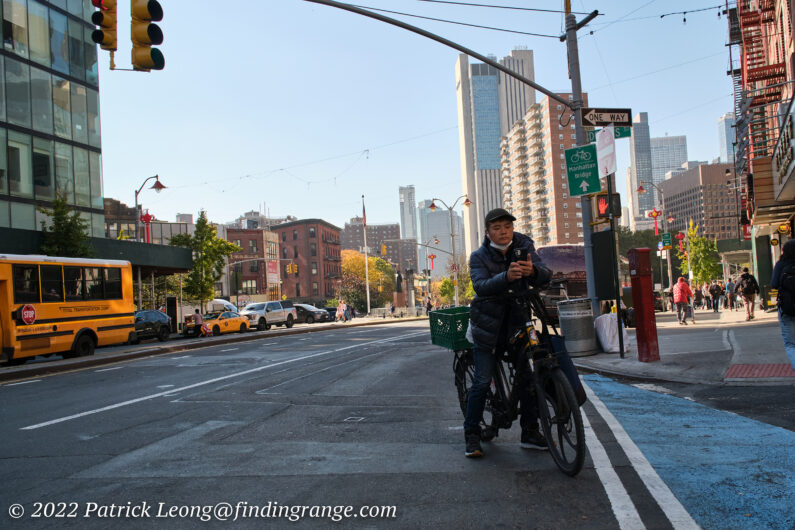
↑ This was a hip shot as I was crossing the street. I used the 18mm focal length. The settings were 800 ISO and f5.6.

↑ I used 200 ISO and f8 here. This was taken with the18mm focal length.
Sigma 18-50mm f2.8 DC DN Contemporary Review Fuji X Bokeh:
As for bokeh, it is pretty awesome, if you ask me. The 18-50mm F2.8 DC DN Contemporary has a fixed maximum aperture of f2.8, so you can definitely achieve a thin depth of field in some situations. It all depends on your distance from your subject, and the focal length used. When you do achieve a narrow depth of field, the bokeh is ultra creamy and inviting. Backgrounds simply melt away, and keep in mind that zooms of this range, aren’t generally known for their crazy bokeh. To me, this lens definitely impresses.
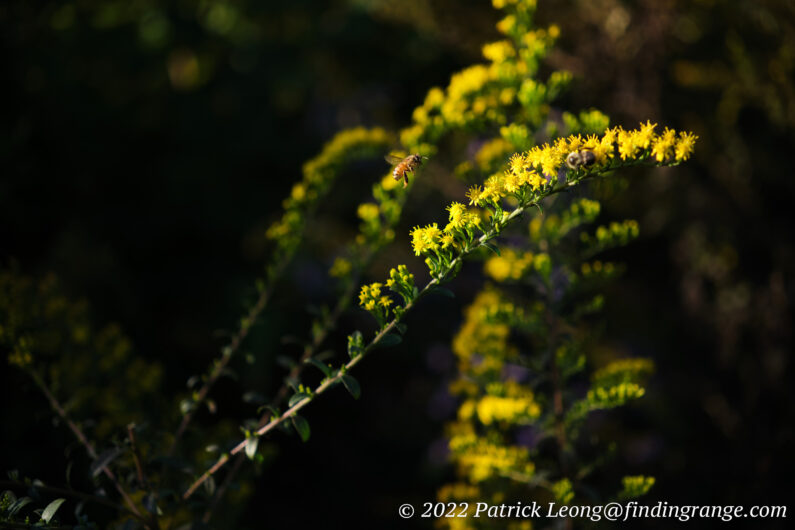
↑ I used the 50mm focal length and wide open aperture. I had the camera set to 400 ISO.

↑ Here’s another taken with the 50mm focal length. I used 160 ISO and wide open aperture.
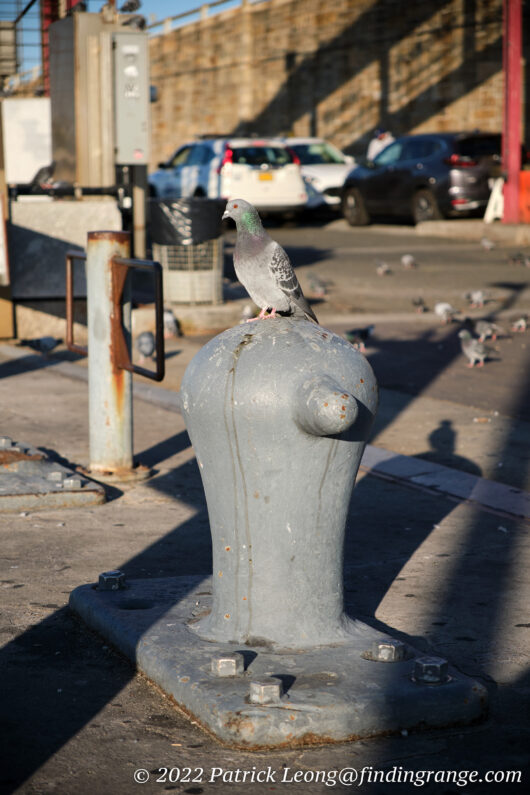
↑ Here’s one taken with the 50mm focal length. I used f2.8 and 160 ISO.
Pros And Cons:
Pros:
- Well-made lens.
- Some of the best ergonomics for a lens of this class: compact and light.
- Mount has dust and splash-resistant structure.
- Fast, accurate, and near silent autofocus.
- Fantastic image quality.
- Fixed and fast maximum aperture.
- Price is good: cheaper than both the XF 18-55mm f2.8-4, and the XF 16-55mm f2.8.
Cons:
- For some, lack of image stabilization although it wasn’t an issue for me. Plus, there are a few Fujifilm bodies with image stabilization.
Sigma 18-50mm f2.8 DC DN Contemporary Review Fuji X Verdict:
For Fujifilm X Series users who are looking for a zoom in what some consider the normal range, the Sigma 18-50mm F2.8 DC DN Contemporary is truly one of the best choices, in my opinion. It’s well made, the ergonomics are perfect for what it is, and the performance is exceptional. I really feel like this was a well-thought out design that specifically targets the mirrorless market. It’s something that you’re not going to want to leave at home.
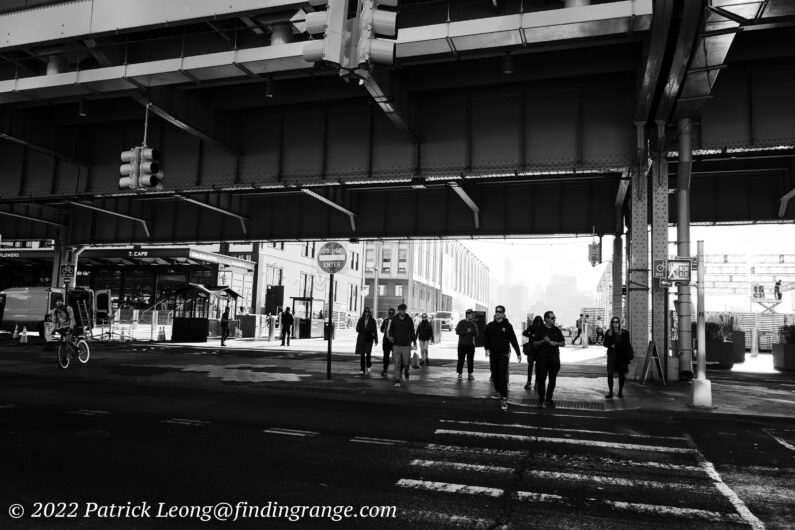
↑ Here’s a photo taken with the 18mm focal length. I used f7.1 and 500 ISO.
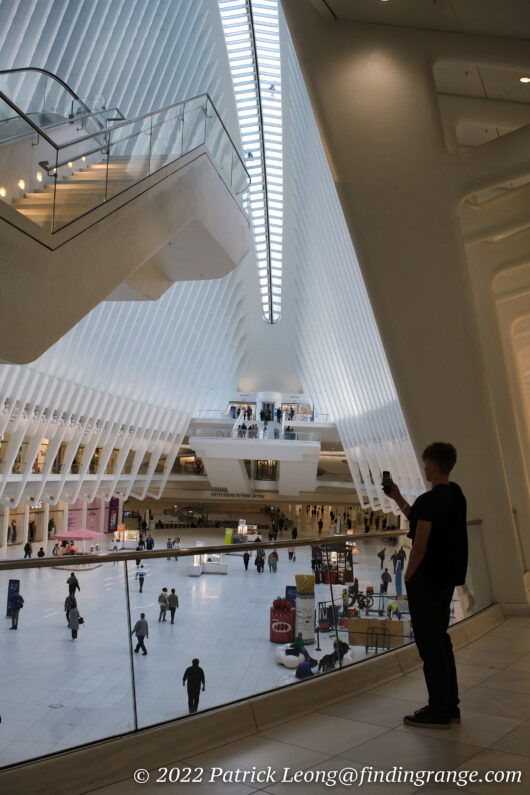
↑ I used the 24mm focal length and 1600 ISO. The lens was set at f5.6.
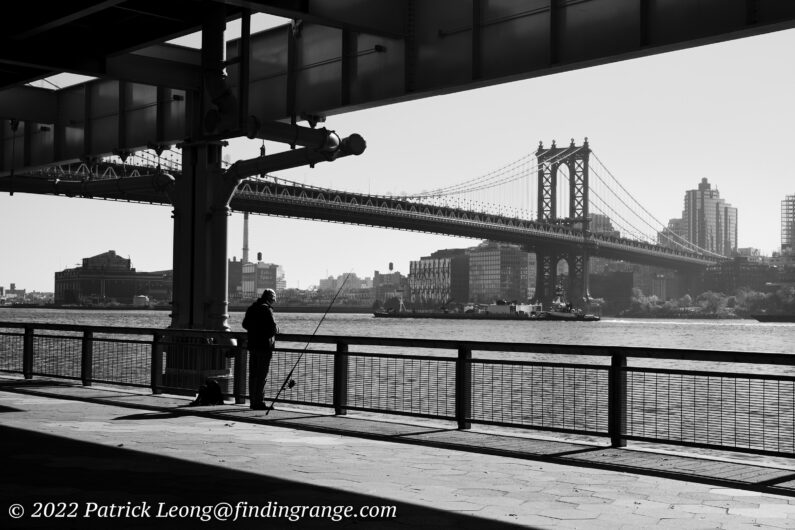
↑ The focal length used was 34mm. f8 and 160 ISO were also used.
Fujifilm does have its own zooms with similar focal length ranges. There’s the 18-55mm f2.8-4, and the XF 16-55mm f2.8. Both lenses are excellent. I actually own the 18-55mm, and have had it since it was released quite a few years ago. While I have not done direct comparisons, I have reviewed all these lenses. I feel that the Sigma measures up quite well to these two lenses. It’s not only significantly lighter, and smaller than Fujifilm’s XF 16-55mm f2.8, it’s actually around the same size the XF 18-55mm but unlike the 18-55mm, the Sigma has a fixed max aperture. In terms of price, the Sigma also wins out here. The Fujifilm XF 16-55mm f2.8 is $1,199, while the XF 18-55mm f2.8-4 is $699. The Sigma is $549. So in my opinion, Sigma has a lens here that can really rival what Fujifilm has to offer.

↑ This was taken with the 27mm focal length. f5.6 and 800 ISO were used.

↑ I used the 37.8mm focal length. f5.6 and 320 ISO were used.
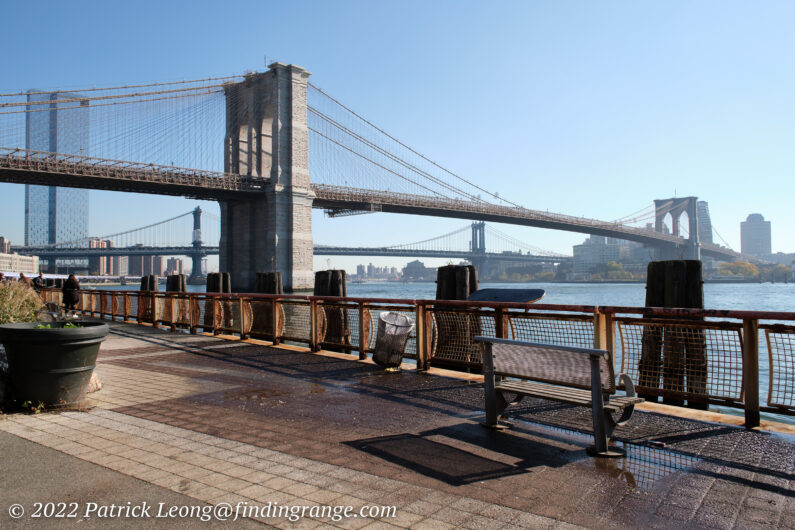
↑ Here’s a photo taken with the 18mm focal length. 160 ISO and f8 were used.
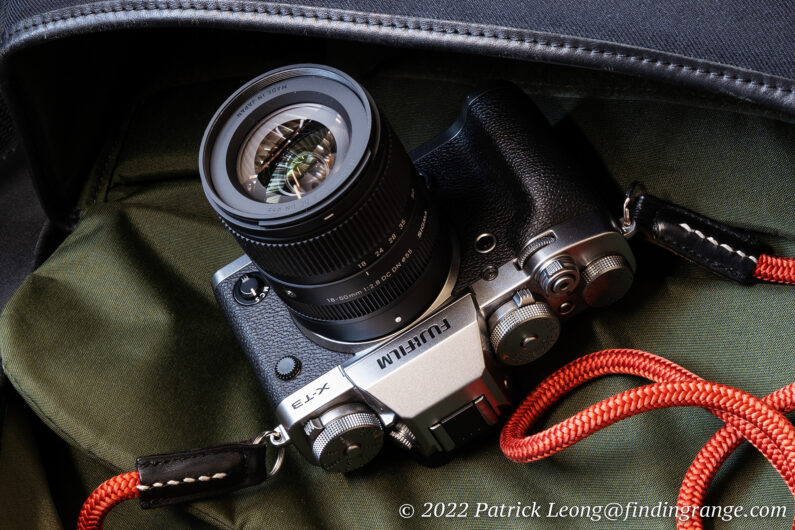
↑ One last photo of the Fujifilm X-T3 with the Sigma 18-50mm F2.8 DC DN Contemporary attached.
The 18-50mm F2.8 DC DN Contemporary is a well rounded performer that pretty much does everything quite well, which is what you want in a zoom of this range. The whole point of a zoom like this is that generally, you won’t need to bring additional lenses with you. This lens definitely has you covered, and as I said in my L mount review, I feel Sigma really hit the bullseye here (again), in my opinion.
Thanks for taking the time to read my review! If you’re considering purchasing this lens, and my review helped, please consider purchasing from any of the links mentioned in this review, which in turn, helps support this site. I get a small commission but it will not cost you anything extra. Thank you!


As always. A great review. Looks a great lens for my XPro3. I have the 16-80 but the Sigma lens you just put in your pocket
Thanks John!
Appreciate you visiting as always! Yeah, this lens is a lot more compact than the 16-80mm. It’s a lot easier to carry around. If you have any questions, feel free to message me. I hope you’re doing well!
Best,
Patrick
Hi,
I was wondering whats your opinion on 18mm vs- 16mm in New York?
Planing a trip there and I have the 18-55 with an X-S10.
I am afraid 18mm might not be wide enough.
I don’t like getting a wideangle prime as I don’t like to change while travling.
Hi Max,
Apologies for the very late reply!
It depends on what you shoot but generally, you can get away with an 18mm. It would be nice to have a wider angle though in case you may want more cityscape stuff. Sometimes, the city is so packed, you simply might not have the space to capture what you want. I hope I did not miss your trip. Apologies again, and thanks for stopping by!
Best,
Patrick
Thanks for the answer.
No it is not to late for the trip, but I purchased a 16-80mm for the trip now. So I will have a little more wide angle and also more on the longer end.
Hi Max,
That should work out better anyway. I hope you have a wonderful trip!
Best,
Patrick
Thanks for the great “double” review! I was especially interested to see the review using the Panasonic S1R; I wanted to see how the lens help up to 47mp. In the hopes the next iteration in the Fuji X-E series would have a higher megapixel count 🙂
Some of us were talking on MACFILOS about what we’d do in 2023 to ‘upgrade’ the Pana-Leica D-lux Typ 109. My thought was The X-E3 with a good zoom. Someone mentioned the Sigma, and zoom: I went and bought it (before seeing your review).
A couple of additional thoughts. At 18mm, it will focus almost right up to the front of the lens, making it a macro. I’d been trying to get a pic of a blossoming pussy-willow branch, with all kinds of different lenses; this one produced an image that was absolutely stunning!
Pretentiousness warning: I’ve been a bit concerned lately with “micro-contrast”. To explain: here at the edge of Washington State, there’s been something like six glaciations, a few volcanic eruptions and the crash of tectonic plates. If you find an eroded river bank, it’s incredibly complicated — and micro-contrast really helps sort out matters.
My normal go-to micro-contrast lens is the Summicron 50 v3. What amazed me was that the Sigma gave me almost the same micro detail! Again, I’d tried a whole bunch of lenses (would you believe a Nikkor Ai-S f1.4?) and the Sigma was the only one that held up to the Summicron.
One warning: at 18mm, there’s some serious barrel distortion. But it’s actually worse on the Pana-Leica D-Lux Typ 109. On the whole, I think the X-E3 and the Sigma are going to be my everyday carry when we go to Japan (two months!) this Fall.
Thanks again for the fine reviews 🙂
Hi Kathy!
I’m so sorry for the late reply! I’ve been so busy lately. How are you??
I see you messaged me a month ago lol (again, apologies), how has the lens been treating you? How are things in Washington State? You’re going to Japan? I’m so jealous! The Sigma is perfect for everyday travel there :). I hope to hear back from you, and have a great weekend!
Best,
Patrick
I have the Fuji 16 – 80 F4 but have just purchased the Sigma 18 – 50 F2.8 and hoping it’s has good has everyone is saying.
Hi Geoffrey!
Both are excellent! The Sigma is more compact that, and trust me, you will notice the difference lol. I hope you enjoy it! Let me know what you think of it! Thanks for stopping by,
Best,
Patrick
Hi Patrick,
I really like the colors in your photos. I’m just wondering about your camera setup and the photo editor you use.
Many thanks,
Radim